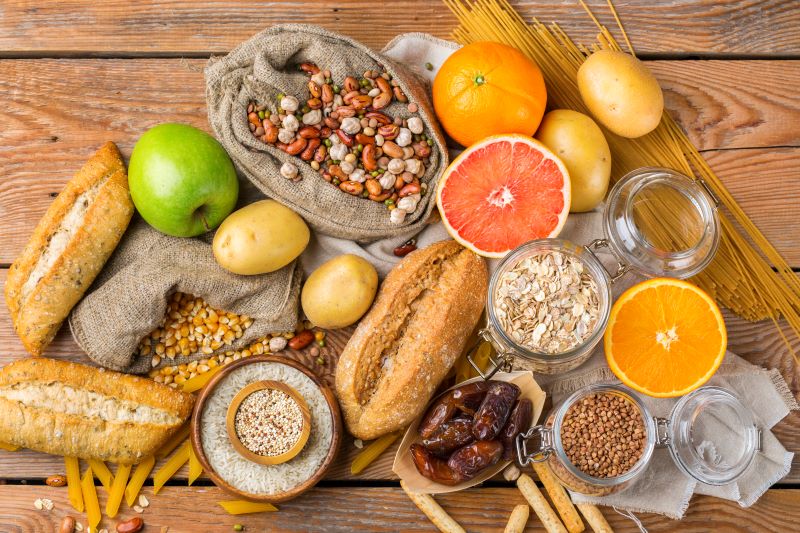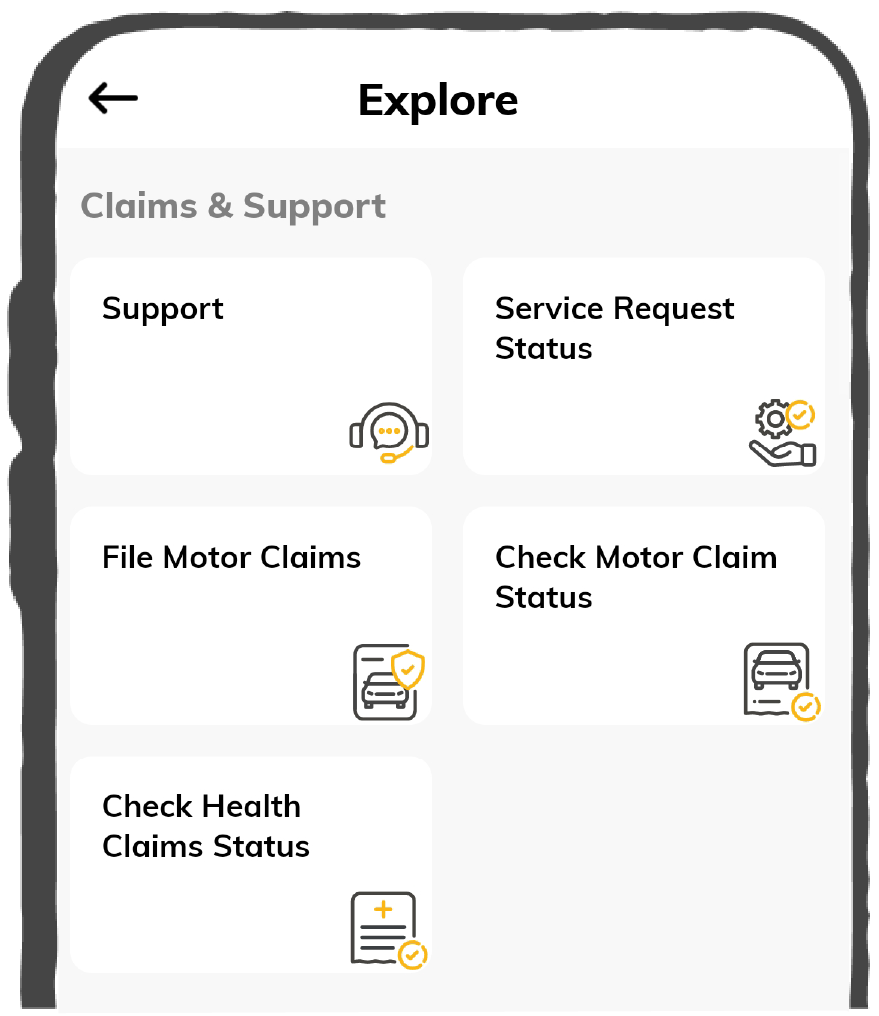What is the Glycemic Index & Ways to Use GI

If you want to maintain or lose weight, consider the glycemic index when making your decisions. Those who have diabetes should be careful about the glycemic index and control their blood sugar levels if they need help for treatment.
It rates foods with carbohydrates from 0 (very low rates) to 100 (high rates), depending on how quickly their intake increases one’s blood sugar concentration.

Table of Content

What is the Glycemic Index?
The glycemic index (GI) scale decides how rapidly blood sugar tiers are raised with carbohydrate diets. Blood sugar rises more slowly and steadily in reaction to meals with a low GI than in response to those with a high GI.
For the ones who have diabetes mainly, this index is beneficial in controlling blood sugar stages because it makes it simpler to select meals, which is an excellent way to keep blood sugar solid and promote general health.
Different Glycemic Index Measurements
Measuring the food glycemic index is imperative for people to understand how it impacts their blood sugar levels and other related health issues. Below is a table indicating various GI measures.
|
Category |
Measurement |
|
Low |
55 or less |
|
Medium |
56 to 69 |
|
High |
70 or above |
What is the Purpose of Maintaining a Glycemic Index Diet?
Maintaining a glycemic index (GI) diet involves consuming foods with a low glycemic index, meaning they cause a slower and more gradual increase in blood sugar levels compared to high-GI foods. The purpose of following a glycemic index diet can be manifold:
- Blood Sugar Management: It primarily helps manage blood sugar levels, especially among people living with diabetes or those who have insulin resistance. By choosing low-glycemic-index foods, a person can prevent immediate spikes or drops in blood sugar levels, leading to more consistent energy levels during the day.
- Weight Management: In weight control and reduction, using low-GI foods in weight management may be beneficial because they help increase satiety and lessen hunger. Satiety signals are usually slow when people eat low-GI foods, thus promoting reduced food intake and overeating.
- Boosted Energy: Indexed food items have low glycemic content. This means the energy released is comparatively higher over an increased period. It helps avoid energy declines experienced when consuming high-glycemic foods most of the time. This facilitates enhanced and regular mental wellness. It also leads to improved daily energy.
- Better General Health: A diet emphasising low-GI food will typically be packed with whole grains, fruits, vegetables, and lean proteins, which support good health. It can assist in lowering the chances of long-term illnesses like type 2 diabetes, cardiovascular conditions, and obesity.
- Improved Athletic Performance: Eating pre-exercise meals with low glycemic index helps supply constant power to an athlete's body, hence boosting endurance and effectiveness in activities involving protracted physical movements.
What are Low Glycemic Foods?
Low-glycemic index foods often have a lower rate of raising blood glucose levels. Examples are vegetables such as green beans, black beans, or even cucumbers; fruits like strawberries or oranges; and whole grains, including jasmine rice or wholemeal bread.
One can shed extra pounds by consuming these foods.
Low glycemic index diet alone reduces harmful cholesterol levels by 8.6% and overall cholesterol by 9.6%.
Heart diseases and strokes are thus related to these bad cholesterols.
According to research, women who ate foods with low-GI factors were less likely to develop endometrial, breast or colorectal cancers, as well as many other types of cancer.
How to Calculate GI For Foods?
Food glycemic index calculation is a complex technique that combines the accuracy of laboratory analysis with the subtleties of human physiology.
Step 1: Recognise serving sizes. To get correct results, the quantity of each meal component must be known.
Step 2: Determine how many carbohydrates (carbs) were in the meal overall. Add together all of the meal's carbohydrates.
Step 4: Confirm the outcomes of the preceding phase. The total of the numbers determined in the previous step should be 1.00; if not, that's acceptable because of rounding.
Step 5: Use the glycemic index to determine each item's value. You may find this information at the official site of glycemic index. Just enter the item's name in the search field on their home page.
Step 6: Determine each item's percentage glycemic value. Multiply each item's GI value by the proportion we determined in Step 3 for that particular item.
Step 7: Determine the meal's overall glycemic value. Total all the figures from the previous step to find the meal's overall glycemic index value.
Step 8: Determine the total dietary fibre content. Include the dietary fibre from each component of the meal as a whole. The nutrition label of most foods has this information.
Step 9: Find the net carbs. Subtract the entire quantity of dietary fibre from the previous step and use the total amount of carbohydrates in the meal (determined in step 2).
Step 10: Determine the meal's glycemic load. Multiply the meal's net carbs from the previous step by the meal's total glycemic value from step 7, then divide the result by 100.
Step 11: Everything is finished! You are now aware of the meal's glycemic load. Any glycemic load over 20 is considered high, whereas any under 10 is considered low. The meal's glycemic load in our example is 21.66, considered high.
What is the Glycemic Index for Common Foods?
Three ranges can be distinguished from the GI values. Foods with a low GI will not cause your blood sugar to rise as much as foods with a medium or high GI.
According to the American Diabetes Association, data is used to highlight low, medium, and high-GI foods in the following figures:
List of Foods |
Grams of Carbohydrates | Average GI |
| Soya Beans | 13 | 16 |
| Chickpeas | 54 | 28 |
| Apple | 15 | 36 |
| Carrots | 6 | 39 |
| Green Peas | 11 | 48 |
| Pasta | 43 | 50 |
| Bread with Cracked Wheat Kernels | 12 | 53 |
| Banana | 27 | 51 |
| Oatmeal | 27 | 58 |
| Sweet Potato | 24 | 63 |
| Brown Rice | 45 | 68 |
| Whole Wheat Bread | 12 | 75 |
| White Rice | 45 | 73 |
| White Bread | 14 | 75 |
| White Potato | 34 | 80 |
Useful Tools to Track Your Health
Meal Planning with the Glycemic Index
Utilising the glycemic index as a guide to create a nourishing day that strikes a balance between enjoyment and health. Every meal and snack is carefully planned to support stable blood sugar levels, encourage satiety, and give continuous energy for the day ahead, from sunrise to sunset.
| Breakfast | 1/2 cup of rolled oats (low GI). 1 cup of unsweetened almond milk. 1/2 cup of mixed berries (low GI). One tablespoon of chia seeds or ground flaxseeds (optional). One tablespoon of chopped nuts (such as almonds or walnuts). |
| Lunch | 1 cup of cooked quinoa (low GI). Grilled chicken breast, sliced. Mixed greens (such as spinach, arugula, or kale). Cherry tomatoes, cucumber slices, and bell pepper strips. Lemon vinaigrette dressing (olive oil, lemon juice, Dijon mustard, salt, and pepper). |
| Snacks | About 23 almonds or 14 walnut halves. |
| Dinner | Grilled or baked salmon fillet. Roasted vegetables (such as broccoli, cauliflower, and Brussels sprouts) tossed in olive oil, garlic, and herbs. 1/2 cup of cooked brown rice (low GI) or quinoa. |
| Hydration | Drink plenty of water or herbal tea throughout the day to stay hydrated. |
Factors Affecting the Glycemic Index of Foods
Several factors can influence foods' glycemic index (GI); by comprehending these factors, individuals can make informed dietary choices to support their health goals effectively.
- Type of Carbohydrate: The type of carbohydrate present in the food significantly affects its GI. Foods with complex carbohydrates, like whole grains, legumes, and vegetables, typically have a lower GI than foods with simple carbohydrates, such as sugary snacks and refined grains.
- Fiber Content: Foods high in fibre tend to have a lower GI because fibre slows down the digestion and absorption of carbohydrates, resulting in a more gradual rise in blood sugar levels. Examples of high-fiber foods include whole grains, fruits, vegetables, and legumes.
- Processing and Cooking Methods: The degree of processing and cooking can influence the GI of foods. Generally, processing that breaks down the structure of the food, such as milling grains into flour or pureeing fruits, can increase the GI. Cooking methods that increase starch gelatinisation, such as boiling, can also raise the GI of certain foods.
- Fat and Protein Content: Foods that contain fat and protein alongside carbohydrates tend to have a lower GI than foods that are primarily carbohydrates. Fat and protein slow down the digestion and absorption of carbohydrates, leading to a slower increase in blood sugar levels. For example, adding nuts or cheese to a meal can lower its overall GI.
- Ripeness and Maturit: yThe ripeness and maturity of fruits can impact their GI. Generally, ripe fruits have a higher sugar content and may have a higher GI than unripe fruits. For example, a ripe banana has a higher GI than a green banana.
- Food Processing: Food processing techniques, such as milling grains into flour or juicing fruits, can increase the GI by removing the fibre and disrupting the food's structure. Processed and refined foods often have a higher GI than whole, unprocessed foods.
- Cooking Time and Temperature: Cooking foods for extended periods or at higher temperatures can increase their GI by breaking down the starches and making them more readily available for digestion. For example, overcooking pasta can increase its GI.
Harmful Effects of Consuming Food High in Glycemic Index
Consuming foods high in glycemic index (GI) can have several harmful effects on health, particularly when such foods are consumed regularly and in large quantities:
- Blood Sugar Spikes: High-GI foods cause a rapid increase in blood sugar levels after consumption, leading to spikes in insulin production. This rapid rise and subsequent fall in blood sugar levels can contribute to feelings of fatigue, hunger, and irritability.
- Weight Gain: High-GI foods are often low in fibre and protein, leading to less satiety and increased calorie intake. Consuming these foods regularly can contribute to weight gain and obesity, both of which are risk factors for numerous chronic diseases, including diabetes, heart disease, and certain cancers.
- Increased Risk of Type 2 Diabetes: Chronic consumption of high-GI foods is associated with an increased risk of developing type 2 diabetes. The rapid fluctuations in blood sugar levels can strain the body's ability to produce and respond to insulin, eventually leading to insulin resistance and impaired glucose tolerance.
- Cardiovascular Disease: High-GI diets have been linked to an increased risk of cardiovascular disease, including heart attack and stroke. Elevated blood sugar levels can contribute to inflammation, endothelial dysfunction, and dyslipidemia, all risk factors for cardiovascular disease.
- Inflammation: High-GI diets may promote inflammation in the body, which is linked to a variety of chronic diseases, including arthritis, inflammatory bowel disease, and certain cancers. Elevated blood sugar levels can trigger the release of inflammatory cytokines and oxidative stress, contributing to tissue damage and disease progression.
- Poor Dental Health: High-GI foods, particularly those that are sugary or starchy, can increase the risk of dental caries (cavities) and gum disease. Bacteria in the mouth feed on sugars from high-GI foods, producing acids that erode tooth enamel and lead to tooth decay.
Overall, while high-GI foods can provide quick energy, regular consumption can harm health over time. To support overall health and well-being, it's important to prioritise whole, minimally processed foods with a lower GI.
Understanding and considering foods' glycemic index (GI) can benefit overall health and well-being. The GI provides valuable information about how different carbohydrates affect blood sugar levels after consumption. Choosing foods with a lower GI, such as whole grains, fruits, vegetables, and legumes, can help promote stable blood sugar levels, sustained energy, and better overall health.
Secure Your Health with These Plans










